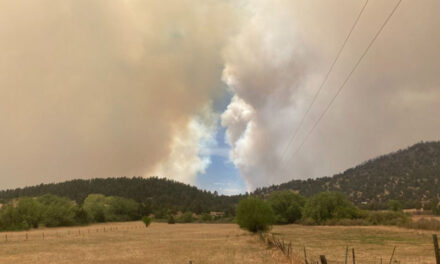
As our seasons trend warmer and drier wildfire can happen at any time, which means New Mexicans need to prepare and maintain their homes against the threat of falling embers and flames.
Take the time to identify vulnerable areas that need to be addressed before a wildfire appears.
And remember, while one may not see the flames, wind can carry hot embers from burning vegetation or other materials at least a mile or more away from an active wildfire. Start with the top of the structure, work down to the ground, and then work out from there.
- Check your roof. Houses with wood shake or shingle roofs are more likely to be destroyed during a wildfire. If possible, consider installing fire-resistant roofing material, such as asphalt composition shingles, metal, concrete or clay tile. A damaged roof with missing shingles and plastic skylights can also give hot embers from a wildfire an easy entry point. Maintain flat roofs, ensuring no cracks or exposed sublayers exist.
- Clear your rain gutters, flat roofs, and valleys in pitched roofs. Remove pine needles, leaves, or other materials that may have accumulated over the winter. Embers can easily ignite in dried out debris. Check your vents. Consider changing out standard ¼-inch mesh with 1/8-inch metal wire mesh (if building codes and required airflow allow) to prevent wildfire embers from penetrating attics, eaves, and crawl spaces. Keep vents clear from debris and do not plant shrubs underneath or in front of vents.
- What about walls? Replace exterior wall coverings that are combustible, susceptible to melting, or can readily transmit heat with noncombustible or fire-resistant materials.
- Windows can be a weak point. Dual-paned windows with tempered glass will resist greater fire intensities than single-pane windows.
- Clean your deck. Remove debris from under your deck and from the gaps between deck boards. Replace wooden lattice with properly vented solid skirting or with 1/8- inch wire mesh to keep embers out.
- Don’t store firewood, gas cans, lawnmowers, cardboard or other combustible materials next to your home. Move these items at least 5-feet away from the outside walls of the house.
- Landscaping could light up your home. Think about replacing flammable plants with fire-resistant species and replace wood chips with decorative rock for ground cover.

















